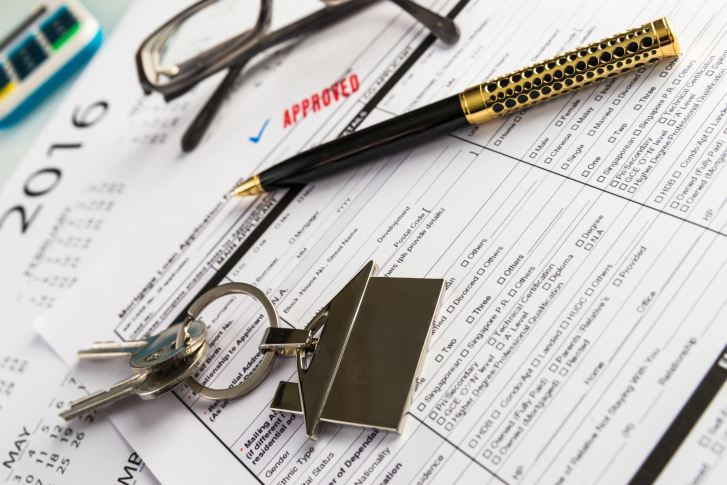3 Tips and Tricks to Make Mortgage Pre-Qualification Easy
 If you’re planning to buy a home, you should know that the mortgage pre-qualification process is the first in a series of steps that eventually lead to home ownership. A pre-qualification is different from a pre-approval – the pre-qualification meeting is simply you and your lender hashing out how much you can afford to spend on a property. But once you’ve been pre-qualified, it makes the mortgage process easier.
If you’re planning to buy a home, you should know that the mortgage pre-qualification process is the first in a series of steps that eventually lead to home ownership. A pre-qualification is different from a pre-approval – the pre-qualification meeting is simply you and your lender hashing out how much you can afford to spend on a property. But once you’ve been pre-qualified, it makes the mortgage process easier.
So how can you make the pre-qualification quick and painless so you can get on with your house hunt? Here’s what you need to know.
Get Your Debts In Order
One of the major questions during the pre-qualification meeting will be your credit history and debt payments. Your lender will use your social security number to look up your credit history and determine how your income and current monthly debt payments stack up. If you have a high amount of debt, you may want to do everything you can to pay it down to qualify for your dream home. However, it’s important to go over the details with a trusted mortgage professional for specific guidance here.
Chart Your Income And PITI
Your lender will use a specific ratio (the PITI to income ratio) to determine how much it’s willing to lend you in order to buy a home – and that’s why, if you calculate this ratio beforehand, you’ll know what to expect going into the meeting. PITI stands for “Principal and Interest, including Taxes and Insurance”. It refers to the four components of a standard mortgage payment. Your PITI ratio, often referred to as the “front end ratio” then, shows how much of your income goes toward your monthly mortgage payment.
To calculate your front end ratio, simply divide your gross monthly income by your monthly mortgage payment (your PITI amounts plus your mortgage insurance). Most lenders will want to see a PITI to income ratio that is under 28%.
Build Up Your Savings Account
It’s important that you have some savings over time that can be used for a down payment, closing costs and reserves. Although there are some very low down payment options, having a decent balance in your savings account always helps you qualify easier for a mortgage.
Closing costs are the fees associated with getting a mortgage loan. These can also be negotiated to be paid by the seller if you choose. But once again, they aren’t required to make that concession, so it would be wise to move toward saving for those expenses.
Reserves are the amounts that will need to be collected to cover your taxes, insurance and mortgage insurance on the property. These will fund the “reserve” in your escrow account so you’ll always have enough to cover those expenses as they come due throughout the year. Your mortgage company keeps this money for you and pays the expenses on time as well.
Pre-qualifying for a mortgage can seem like a daunting process, but it’s actually quite simple. Your mortgage advisor can help you to understand what goes into a pre-qualification. Contact us today to learn more about how pre-qualifications work and how you can get started.
Categories
- Around The Home
- Awards
- Bankruptcy History
- Budget
- Chapter 7 Bankruptcy
- Construction Loan
- Credit
- Credit Scoring
- Environmental Awareness
- Escrow Tips
- Fair Housing
- Federal Reserve
- FHFA
- Financial Crisis
- Financial Fraud
- Financial Reports
- Foreclosure
- Holiday Tips
- Holidays
- Home Building Tips
- Home Buyer Tips
- Home Buying Tips
- Home Care
- Home Care Tips
- Home Decorating
- Home Financing Tips
- Home Maintenance
- Home Mortgage
- Home Mortgage
- Home Mortgage Tips
- Home Mortgages
- Home Seller Tips
- Home Selling Tips
- Home Tips
- Home Values
- Home Values
- Homebuyer Tips
- Homeowner Tips
- Housing Analysis
- Housing Market
- Investment Properties
- Market Outlook
- Mortagage Tips
- Mortgage
- Mortgage Application
- Mortgage Guidelines
- Mortgage Rates
- Mortgage Tips
- mortgage-rates-whats-ahead-september-17-2012
- Organization Tips
- Personal Development
- Personal Finance
- Rankings
- Real Estate
- Real Estate Definitions
- Real Estate Tips
- Real Estate Trends
- Selling Your Home
- Student Loans
- Tax Debts
- Taxes
- The Economy
- Travel
- Uncategorized